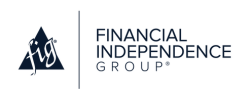Can we be blunt for a second?
In a hyper-competitive advisory landscape, not all clients are created equal. But that’s not a bad thing.
The key to building a more efficient, profitable, and personalized advisory practice is understanding how to segment clients effectively.
Segmenting clients is more than an organizational tool—it’s a strategic approach that allows you to group clients by shared characteristics like assets under management (AUM), revenue, behaviors, and service needs. This helps you deliver customized service, allocate time more effectively, and identify growth opportunities within your book of business.
In this article, we’ll explore:
- Why client segmentation is essential for modern financial advisors
- How to segment clients for an advisory business using proven frameworks
- Tools and tips for implementing client segmentation in your model
- Key metrics to track and optimize over time.
Why Should Financial Professionals Segment Clients?
Segmenting clients enables you to work smarter, not harder. Instead of offering the same level of service to every client—regardless of revenue or complexity—you can strategically prioritize where your time and resources go.
Top benefits of client segmentation for financial advisors:
- Improve operational efficiency: Spend more time with high-impact clients and automate lower-tier interactions.
- Enhance personalization: Tailor outreach, service levels, and communications based on each client’s needs and preferences.
- Aim to enhance profitability: Reduce cost-to-serve by aligning resources to client value.
- Strengthen retention and referrals: Give your best clients the white-glove experience they expect, building loyalty and advocacy.
How Do You Segment Clients for an Advisory Business?
There’s no one-size-fits-all approach to segmentation—but there are several frameworks that work particularly well for financial advisors. The right one depends on your firm’s goals, your client base, and how you measure success.
We’ve detailed client segmentation ideas in a previous post, but let’s outline them again here.
Tiered Segmentation
The tiered model categorizes clients into levels based on their importance to your business. In this case, we’ll use Platinum, Gold, Silver, and Bronze, based on measurable criteria like AUM, revenue, or referral frequency. This structure is easy to implement and can be a great first step toward more advanced segmentation.
Sample tiering criteria:
| Tier | Typical AUM | Client Characteristics |
|---|---|---|
| Platinum | Over $1 million | High revenue, frequent referrals, and complex planning needs |
| Gold | $350,000 – $999,000 | Good engagement and moderate complexity |
| Silver | $150,000 – $350,000 | Limited growth potential and emerging clients |
| Bronze | Less than $150,000 | Transactional relationships with minimal needs |
From here, you can design service levels that match each tier’s value to your business (more on that later).
Scored Segmentation
A scoring model adds more flexibility by weighting different variables—not just AUM. For example, you may assign points based on:
- Annual revenue generated
- Referral potential
- Time/effort to service
- Potential of growth
Here’s an example of a hypothetical client score using this system:
| Attribute | Weight (%) | Client Score (1-5) |
|---|---|---|
| Revenue | 40% | 5 |
| Referrals | 30% | 3 |
| Effort to Serve | 20% | 4 |
| Growth Potential | 10% | 4 |
| Weighted Client Score: 4.1 / 5 |
From here, you can also then tier these average weighted scores to help you segment even further. Using the platinum to bronze example, it could look something like this:
- 4.0 – 5.0 = Platinum-level service
- 3.0 – 3.9 = Gold-level service
- 2.5 – 3.9 = Silver-level service
- 0.0 – 2.4 = Bronze-level service
Scoring systems like these will give you a more holistic view of client value, which is especially helpful when AUM doesn’t tell the full story.
Behavioral and Psychographic Segmentation
To supercharge your model, consider layering in behavioral segmentation.
By understanding your clients’ preferences, attitudes, and financial personalities, you can deliver more targeted communication and planning experiences.
Behavioral variables to consider:
- Communication preferences (in-person, phone, email, text)
- Risk tolerance (high, medium, low)
- Financial decision-making style (delegator, hands-on)
- Frequency of engagement (high, medium, low)
Related: Engaging HENRYs: Strategies for the Next Generation of HNW Clients
Creating a Segmented Financial Service Model
Once your client segments are defined, the next step is matching them to differentiated service levels. This ensures you’re not under-serving top clients or over-extending yourself with low-value accounts.
| Segment | Touchpoints | Deliverables |
|---|---|---|
| Platinum | Quarterly meetings, annual reviews, concierge access | Advanced planning, family office services, and exclusive events |
| Gold | Bi-annual reviews, in-depth communications | Investment planning, tax-efficient strategies, and events |
| Silver | Annual reviews, digital communications | Streamlined planning, automated reporting, and events |
| Bronze | One annual check-in | Basic services, email newsletters |
Customize these based on your firm’s size and capacity, but remember: consistency is key. Everyone on your team should know what service levels apply to which segment.
Best Practices for Implementing Client Segmentation
#1: Keep it transparent, but tactful.
You may not need to overtly label clients as a tier like “Bronze,” but you should outline what they can expect from your relationship. A formal service menu or onboarding guide is a great way to set expectations upfront.
#2: Review segments regularly.
Client value isn’t static. Re-evaluate segments at least once per year—or more frequently if clients change life stages, refer new business, or alter investment behavior.
#3: Align your team and tech.
Ensure your customer relationship management (CRM) tool is updated with each client’s segment. Automate workflows, meeting reminders, and communications based on tiers. A well-tagged client list helps scale your business efficiently.
#4: Track the right metrics.
To evaluate and improve your segmentation model, monitor these metrics:
- AUM and revenue per segment
- Referral rate by client tier
- Client satisfaction/NPS per segment
- Time-to-service ratio per client
- Cost-to-serve by segment
These metrics will help you understand where to invest more attention—and where automation or streamlining might make sense.
Final Thoughts: Segment to Scale
Financial professionals who segment their clients aren’t just organizing their books—they’re building a foundation for scalable, meaningful growth. Client segmentation enables you to work more strategically, improve retention, and ultimately serve your clients in a way that matches both their needs and their value.
How do you start segmenting clients today?
Begin by reviewing your top 20 clients. What do they have in common? What’s their revenue impact? What type of service do they expect? Use that as your baseline, then expand your segmentation strategy from there.
Sooner than later, you’ll likely realize the immense impact that client segmentation can have on your business.


